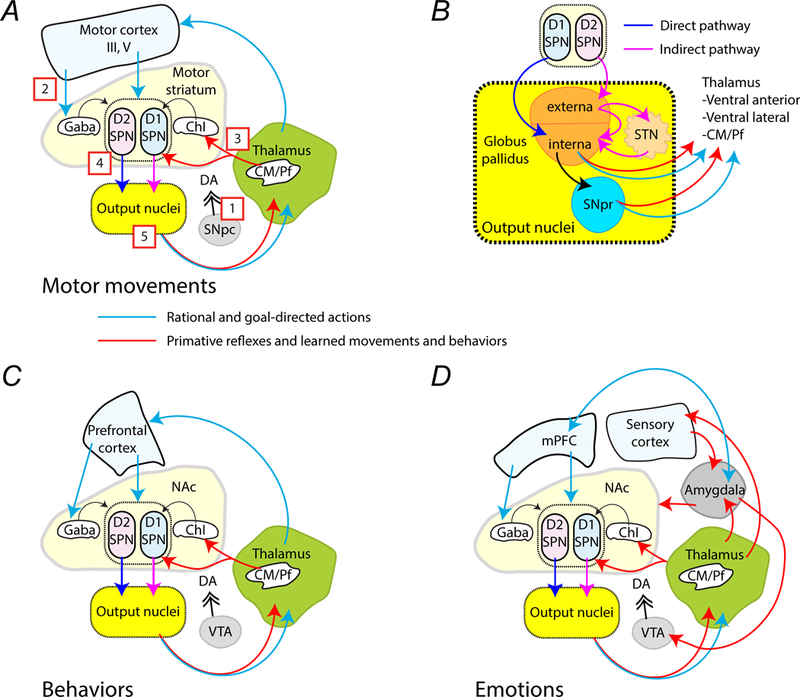Figure 3.

Simplified circuits that mediate habitual, rational, and emotional actions and behaviors. (A) This simplified schematic describes the connections between brain regions involved in executing movements. The red arrows are pathways proposed to mediate primitive or learned habitual movements, while blue arrows represent pathways involve in learned rational and goal-directed movements. [1] Signaling by dopamine from the SNpc that is coincident with either [2] excitatory VGLUT1 corticostriatal projections or [3] excitatory VGLUT2 thalamostriatal projections is relayed through [4] striatal SPNs. [5] Information is processed within the striatal output nuclei, which includes the globus pallidus, SNpr and STN, before being sent on to the thalamus. The thalamus then directs information back to the cortex or the striatum. (B) The drawing shows the output nuclei that receive inhibitory GABAergic signals from the SPNs. These nuclei allow signal inversion so that signals from D1R-expressing SPNs excite the thalamus, while signals from D2R-expressing SPNs are inhibitory. (C) The schematic describes the putative connections involved in irrational habits (red arrows) and reward-based, rational behaviors (blue arrows). (D) The simplified schematic shows the interconnections proposed to encode emotional behaviors. The amygdala receives inputs from the thalamus and from the sensory cortex. Emotion-based behaviors (red arrows) extend from the amygdala to the VTA, the mPFC, and the NAc. The mPFC (blue arrows) processes emotional responses using extinction, which allows goal-directed behaviors instead of emotion-directed behaviors to be executed if they conflict.
